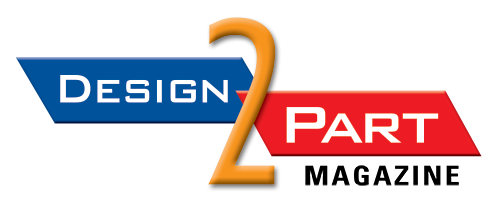Ray Products often educates customers on the benefits of using pressure forming for low- to mid-volume production runs
By Mark Shortt
Ray Products is a third-generation family-owned custom plastic molder known for its advanced heavy-gauge thermoforming capabilities, from pressure forming to vacuum forming and large-part thermoforming.
The Ontario, California-based company complements these capabilities with five fully robotic 6-axis CNC trimming centers that provide the ability to efficiently and repeatably trim features from complex parts.
“Once the robot is programmed, the part-to-part repeatability and efficiencies that we gain from having robotic trim centers is huge,” said Ray Products Vice President of Sales and Development Jason Middleton, in an interview with Design-2-Part. “We don’t use any other type of CNC.”
Although many designers and engineers are familiar with plastic injection molding, fewer know the ins and outs of pressure forming, a process that provides highly detailed plastic parts with lower tooling costs and shorter lead times than injection molding. Middleton lets people know that pressure forming can be a more cost-effective alternative for a medical or other high-tech OEM engineer who may only need a thousand or so multi-part assemblies per year.
The pressure forming process involves heating thermoplastic sheets, and then using vacuum and pressure to press them against the surface of the mold. It produces plastic parts with no residual stress, a high level of detail, and molded-in features, such as vents and louvers, textures, and letters and logos. It also yields sharp corners, tight tolerances, and zero draft, according to the company’s website.
“With the ability to form in undercuts and snap-fit features, pressure forming can reduce assembly time while providing similar cosmetic qualities typically seen with injection molding, with a high-quality finish that doesn’t need to be painted,” the company’s website states.
Middleton distinguished pressure forming from vacuum forming, which is typically used for parts that have big radiuses and few features to them, such as medical trays. Pressure forming, he said, is used for more complex parts. It enables the manufacturer to achieve different features, such as undercuts for tabs and slots, that help bring multi-part assemblies together, with sharp, crisp reveal lines between parts, he said.
“Part of the luxury of the pressure forming process is we can develop actuating slides in the tool that will form-in different features in the part,” he explained. “We may run a very small undercut around the perimeter of the part because it’s mating up against another plastic part or a sheet metal part, and we want to maintain a reveal line between those parts. So, two parts are coming together and interlocking with each other, and I just eliminated 75 or 80 percent of the assembly time by helping design features to interlock the plastic parts together, for ease of assembly and also serviceability.”
Middleton said there are a few things that customers are often surprised to find when they see the benefits of pressure forming for the first time. The first is cosmetics, and the amount of detail that Ray Products is able to achieve in the part. At tradeshows and during customer visits, OEMs would look at pressure formed parts and mistake them for injection molded parts, he said.
“We’ve had a lot of people at tradeshows who, when they walk by our booth, say, ‘Oh, that’s a nice injection molded part.’ We tell them, no, it’s not injection molded—it’s actually pressure formed. Once they hear that, everyone looks at me like, ‘What are you talking about?’”
Another thing that surprises people is the tolerances that Ray Products is able to hold. “I don’t have a customer today [for whom] I wasn’t able to hold a tolerance that they were looking for. And that’s because of the part repeatability,” Middleton said.
The third surprise is often the ability to achieve molded-in color. Unlike sheet metal or reaction injection molding (RIM), no painting is required.
“Injection molding and pressure forming are the only two processes that can offer a Class A surface without paint,” he said. “Our customers are usually very surprised at the low MOQs that are needed for any custom color. Any Pantone number that somebody can throw at us, including metallics, we can match.”
In addition to those three, the cost of tooling is often a pleasant surprise as well. Middleton said the company’s pressure forming process is typically anywhere between 10 to 20 percent of the cost of an injection molded tool. When customers are in the low-volume to mid-volume annual usage range, they realize they can save a significant amount of money on tooling, and get their product to market faster, he said.
“The tools last forever. When we keep possession of the tools at Ray Products, the tools are guaranteed for the life of the project.”
